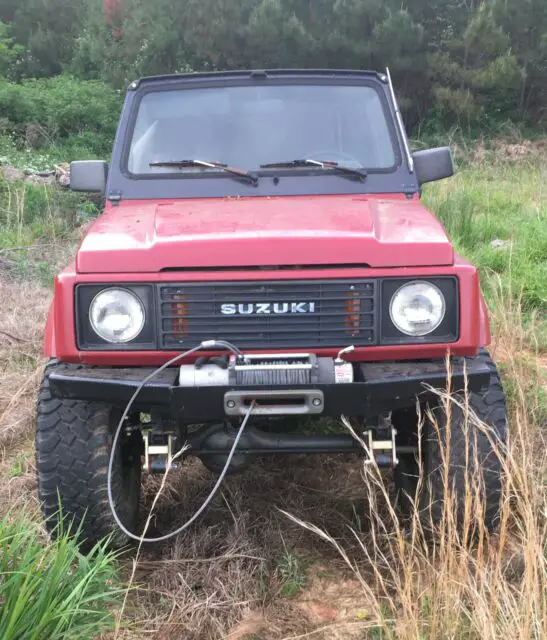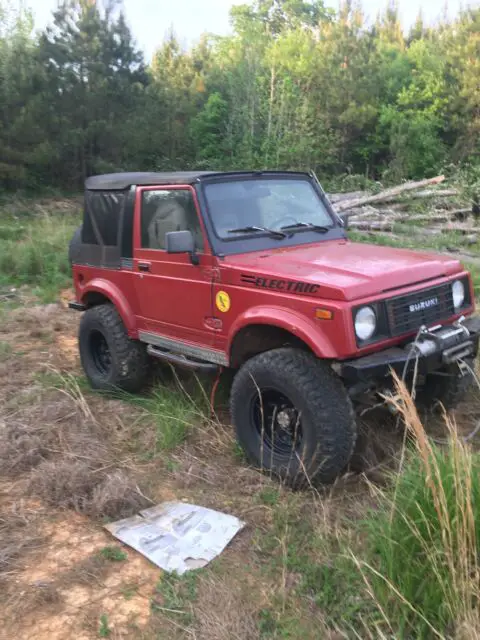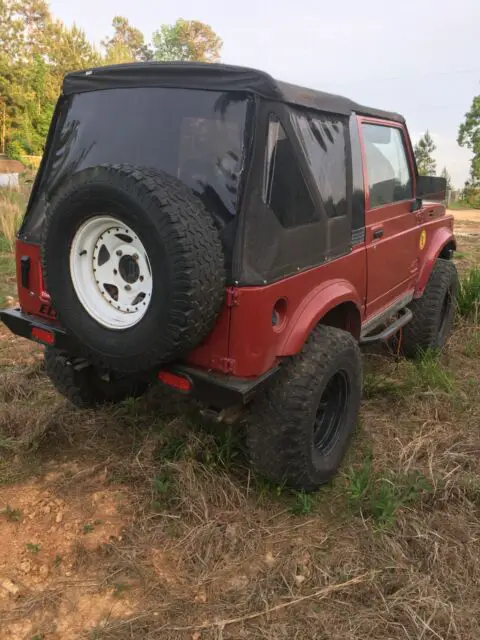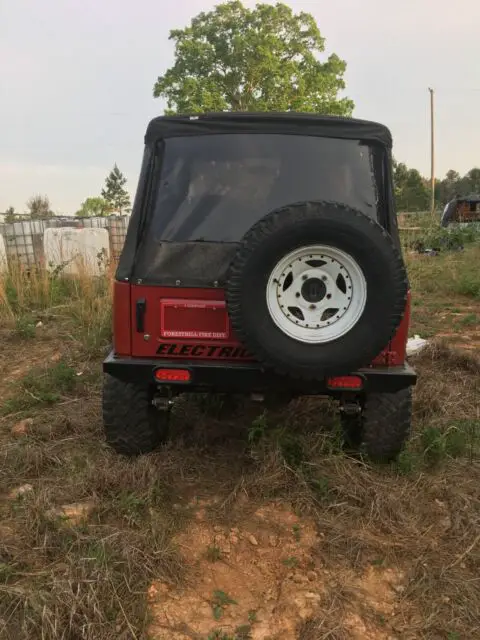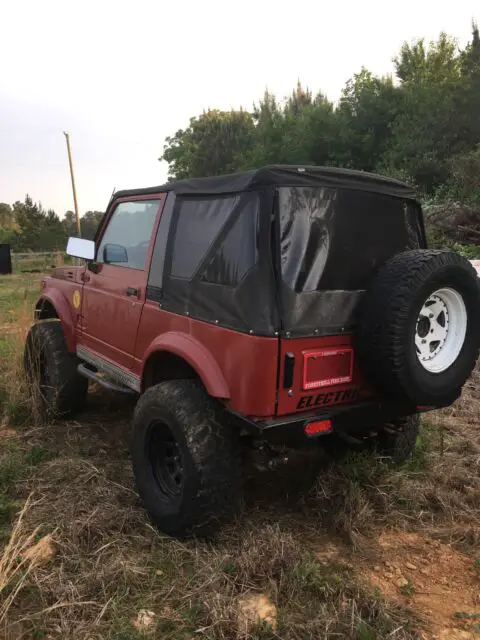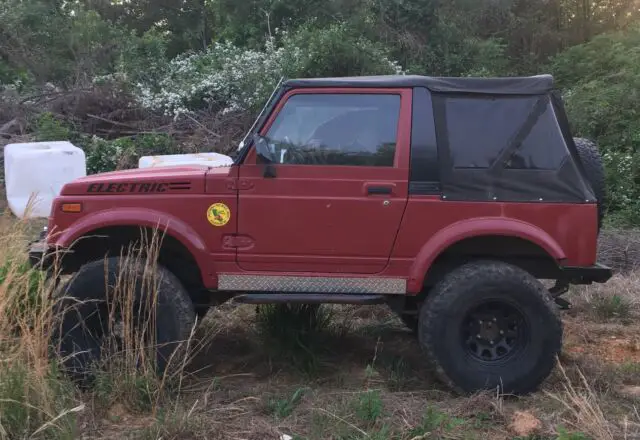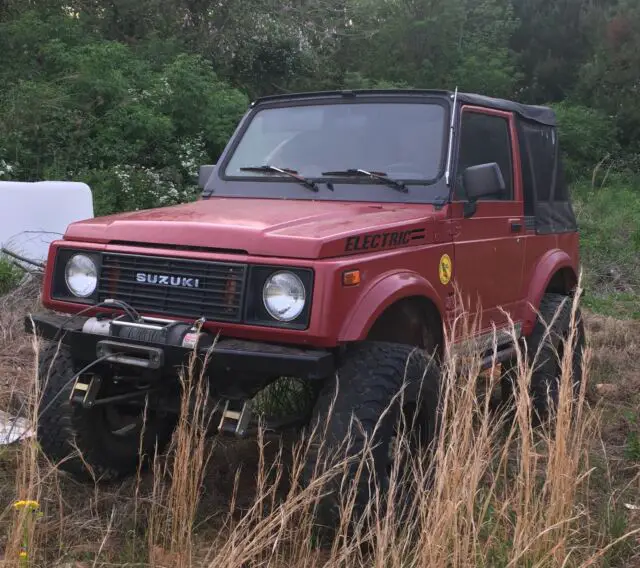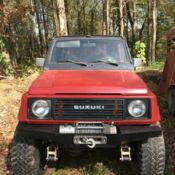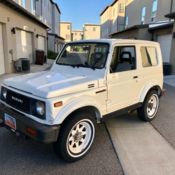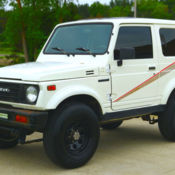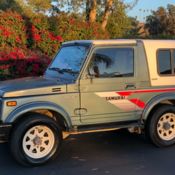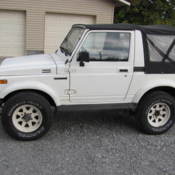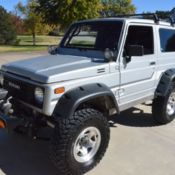1986 EV Suzuki Samurai 4WD (AWARD WINNING)
1986 Suzuki Samurai
1986 EV Suzuki Samurai 4WD
(AWARD WINNING)
Asking 14k OBO
(Open to offers)
Location: Chapel Hill, North Carolina, NC
(Will do local pick up or ship to anywhere in world)
Fire engine red.
CUSTOM BUILT. from the ground up.
VIN: JS4JC51V6G4110943
Clean title in hand.
Text or Call or Email
Alexander
Nectar name 108 @ g mail dot com
919 NINE zero FOR 0274
Links for this exact vehicle samurai:
build:
https://www.youtube.com/watch?v=dMmHW-rWR5s&t=53s
on trails:
https://www.youtube.com/watch?v=zbkigdox4gc
1986 EV Suzuki Samurai general info:
This vehicle was custom made by a genius asian in California.
There are many youtube videos of this exact vehicle in action. It was built to be a “rock climber” and has won awards and contests in the Sierra Nevadas.
There are many cool features including, 4WD, tire air control, winch, A/C heater, regenerative braking, a strong winch, and some other nifty details.
Essentially this Samurai was built by selecting two 80's Samurais in good condition and the guy Jason Brooks, disassembled them both completely, choosing the very best parts from both vehicles ! As far as a custom build it doesn’t get better than that, considering its basically two vehicles for the price of one, with lots of custom EV work.
Detailed Specifications on this 1986 EV Suzuki Samurai:
The motor is a HPEV AC-31 with a Curtis controller.
The charger is a 2500 watt. It takes 6-8 hours on 120v and a 3 on 220.
The 12v system is a Clean Power 32 amp charger behind glove box.
The gauge is a Clean Power multi gauge.
(The car had 3 Chevy volt modules. For a total of 13kwh.)
the 96 volts system is not grounded to the chassis.
The plug in for the vehicle point is where gasoline would have once be put in. As you might see on modern EVs.
The Winch is a Warn m6000. It is a very good winch.
The rear bumper was not made for towing, but it does have a hitch for pulling it out when stuck. It was made mostly to protect from rocks.
The car has a trailer hook up wire under the hood to be towed behind another car. I pulled it behind my truck.
I am including a sway bar for towing this vehicle behind another if wanted.
Notes on functionality from Jason Brooks etc:
Throttle and brake controls / info:
Always have it in gear and clutch out when pushing the gas pedal. The motor does not have a idle speed so there is no reason to slip the clutch to take off or change gears. The risk is the the motor will spin possibly over rev and also burn the clutch.
The car has re regenerative braking with the switch to “on”. When you push the brake with this switch on, it will use the engine to slow you down and make a little electricity to go back in the batteries. This is fine as long as you realize there are some limitations on the use of it. In 4wd low range, it will absolutely be to much braking and will throw you forward in you seat HARD! And I never use it in first gear in high range. Also in slippery conditions like rain and snow with 2wd, it will only brake the rear tires which can cause you to skid and lose control.
It you turn the switch off and and just the knob, you can adjust the automatic braking. This is where it automatically adds braking when you take your foot off the gas. I usually adjust their know in the 8 or 9 O’clock position. This will feel like how a normal car slows down when you let off the gas and the engine slows you down.
4wd operation.
The 4wheel drive transfer case is a lower geared 4:16 to one. It is very low. It also has a split H pattern that allows you to use 2wd high and low and 4wd high and low. This is the Petroworks design. It takes a while to learn how this works. There are videos on YouTube on this.
The front axle has chromoly axles from Trail Tough and a Lock Right automatic locker.
The rear axle is a air locker. There is a compressor switch on the dash and a button to lock the rear axle. The air compressor also has an air chuck to air your tires up.
Heater.
There is a heater with two elements. Each has a button under the steering wheel. Run both for high, on for low. You also need to have the stock temp control on hot. The heater takes a lot of power! And always use the fan to keep the heater fluid moving.
Brakes.
The brakes are a vacuum pump that comes on often so you have power brakes. The first inch of braking is only electrical brakes and then the normal brakes work.
Tires
I run about 12lbs off road for traction and over 30 for the road to save electricity.
Cooling fan:
The defroster switch on dash left of steering wheel is a cooling fan. Usually not needed unless used at highway speeds. The actual factory Samurai temp gauge works. I keep it under about the 10:00 position.
IMPORTANT NOTE:
Everything listed below is included but the vehicle does not have batteries or a battery management system (BMS) currently.
We previously had (3) chevy volt batteries in it and it was working fine. See videos for exact reference on performance and functionality.
The connections are behind the rear seat of the vehicle for (2) batteries and (1) was mounted under the hood. All the connections are still there.
My recommendation would be simply to go for new batteries, of your choosing, and or consider adding an extensive battery management system (BMS).
Apparently the same Chevy Volt batteries could be had for around $3500-4000 on the open market or you could opt for something different.
However you can take this vehicle and customize the batts / power / BMS however suits your needs for intended use!
- Make: Suzuki
- Model: Samurai
- Year: 1986
- Mileage: 300
- VIN: JS4JC51V6G4110943
- Drive type: 4WD
- Vehicle Title: Clean Want to buy? Contact seller!
